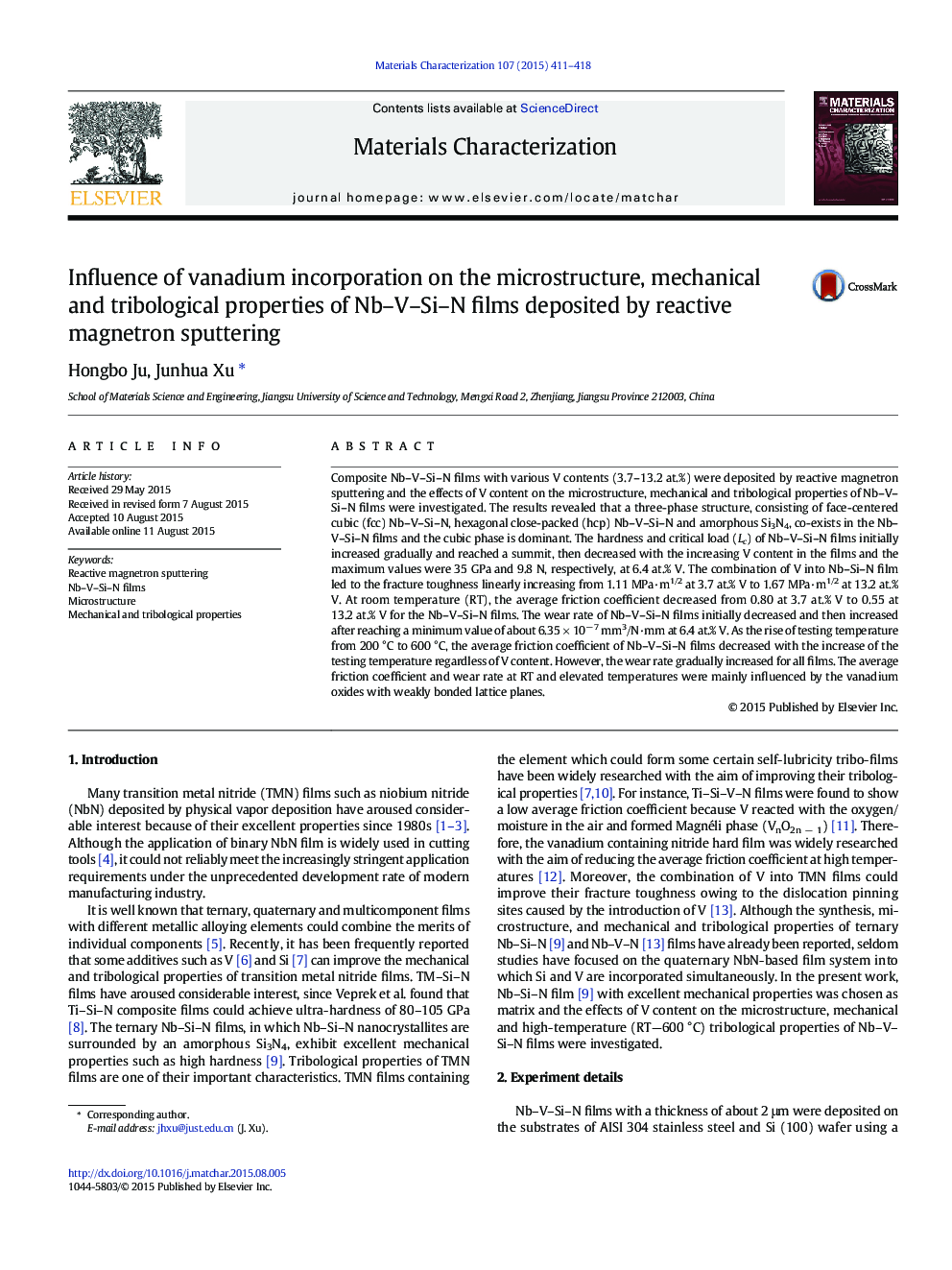| Article ID | Journal | Published Year | Pages | File Type |
|---|---|---|---|---|
| 7970300 | Materials Characterization | 2015 | 8 Pages |
Abstract
Composite Nb-V-Si-N films with various V contents (3.7-13.2 at.%) were deposited by reactive magnetron sputtering and the effects of V content on the microstructure, mechanical and tribological properties of Nb-V-Si-N films were investigated. The results revealed that a three-phase structure, consisting of face-centered cubic (fcc) Nb-V-Si-N, hexagonal close-packed (hcp) Nb-V-Si-N and amorphous Si3N4, co-exists in the Nb-V-Si-N films and the cubic phase is dominant. The hardness and critical load (Lc) of Nb-V-Si-N films initially increased gradually and reached a summit, then decreased with the increasing V content in the films and the maximum values were 35 GPa and 9.8 N, respectively, at 6.4 at.% V. The combination of V into Nb-Si-N film led to the fracture toughness linearly increasing from 1.11 MPa·m1/2 at 3.7 at.% V to 1.67 MPa·m1/2 at 13.2 at.% V. At room temperature (RT), the average friction coefficient decreased from 0.80 at 3.7 at.% V to 0.55 at 13.2 at.% V for the Nb-V-Si-N films. The wear rate of Nb-V-Si-N films initially decreased and then increased after reaching a minimum value of about 6.35 Ã 10â 7 mm3/N·mm at 6.4 at.% V. As the rise of testing temperature from 200 °C to 600 °C, the average friction coefficient of Nb-V-Si-N films decreased with the increase of the testing temperature regardless of V content. However, the wear rate gradually increased for all films. The average friction coefficient and wear rate at RT and elevated temperatures were mainly influenced by the vanadium oxides with weakly bonded lattice planes.
Related Topics
Physical Sciences and Engineering
Materials Science
Materials Science (General)
Authors
Hongbo Ju, Junhua Xu,
